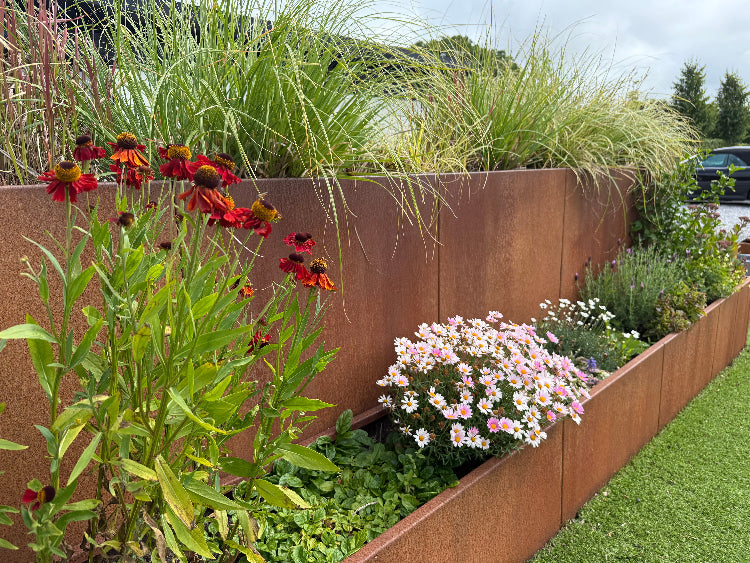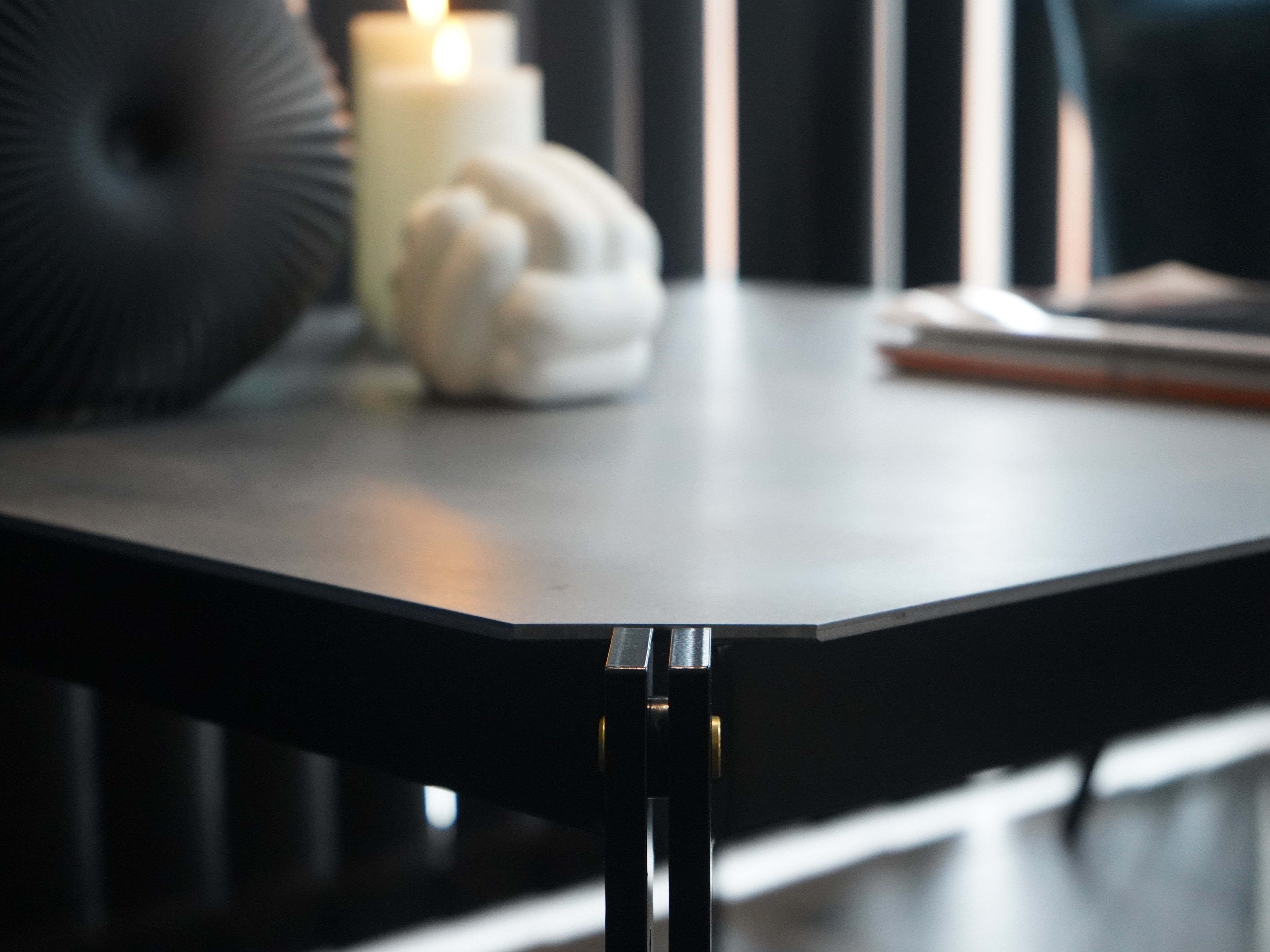How to handle corten steel on
Wooden terrace or tiles
Corten steel is popular for its rustic, industrial aesthetic and long durability – but when combined with wooden decking or paving, it is important to take some special precautions.
The rust water from corten steel can cause staining, especially in the early stages of patination. Here is a guide on how to best use corten steel on your deck or paving to avoid discoloration, protect the surface, and enjoy the beautiful look of steel for many years to come.
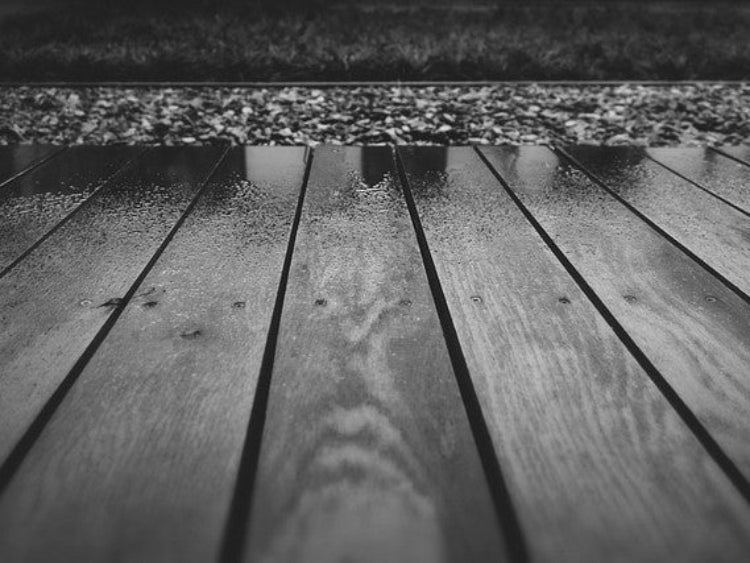
Helpful tips
Tips and tricks for placement, drainage, etc.
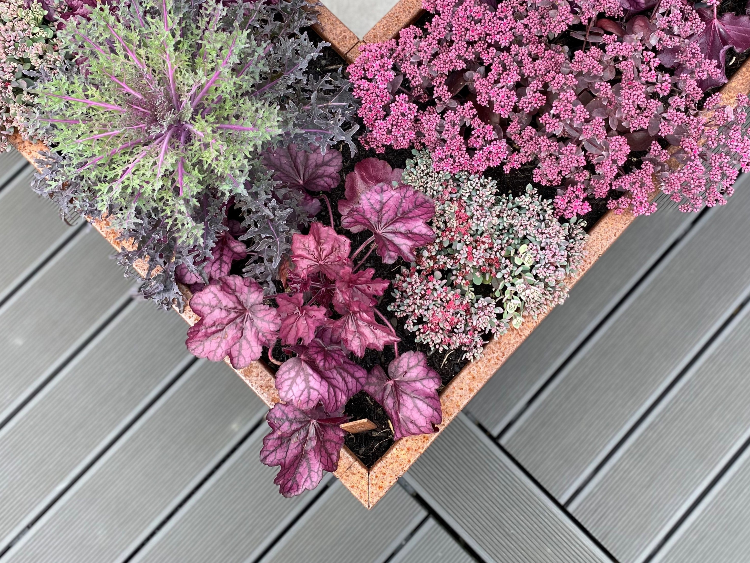
Understand the qualities of corten steel
Corten steel is designed to rust – and it is precisely this rust layer that protects the steel from corrosion. However, during the first few months, the steel will release rust water, especially in wet weather.
This is particularly important to bear in mind if corten steel is placed directly on wooden decking or light-colored paving, as the rust water can cause unwanted marks and discoloration.
The problem: The rust water can leave dark red or orange stains – which can penetrate the surface of wood and be difficult to remove from tiles, especially porous materials such as concrete or limestone.
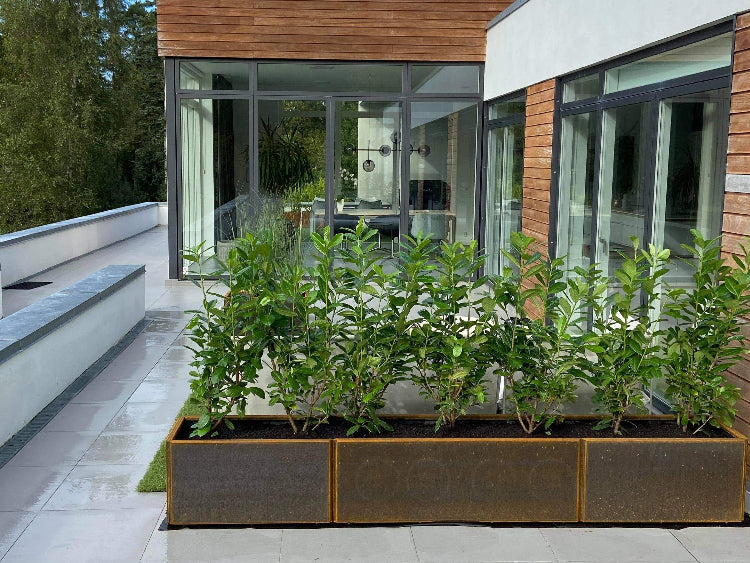
Placement and Drainage: Avoid Water Runoff Over Wood
When using corten steel – for example in planters, edging, or screening – proper setup is important to avoid direct contact with the surface beneath.
We recommend:
- Choose models with a bottom plate, legs, or wheels, so water can drain away and doesn’t pool underneath the product.
- Use a temporary base (such as a painter’s cloth, weed control fabric, or plastic tray) under the product during the first few weeks.
- Ensure a slight slope or drainage so that rust water doesn’t remain stagnant or run across wood or tile surfaces.
These measures significantly reduce the risk of rust stains and discoloration.
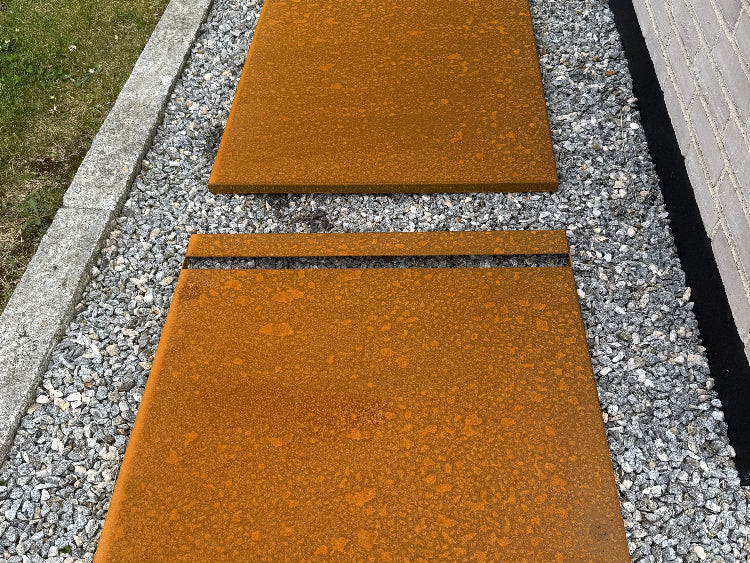
Avoid staining – start the weathering process elsewhere
A smart trick is to let your corten steel pre-weather somewhere else – for example in the garden, on grass or gravel – for a couple of months.
Once it has developed its stable rusted surface, it will release significantly less rust runoff.
This is especially a good idea if you plan to place corten steel:
- On newly treated wooden decking
- On light or porous tiles
That’s why we recommend purchasing your planters or fire pits well in advance – so they can patinate before being moved to their final location.

Protection of the surface beneath
If you choose to place corten steel directly on a terrace or paved surface, be sure to protect what's underneath:
- Treat wooden surfaces with oil or wood preservative to make them less vulnerable to rust runoff.
- Use hidden zinc trays, membranes, or plastic mats under the product to catch runoff.
- Avoid flat areas and joints where water can collect between the steel and the surface – this is especially important near corners and edges.
- On tiles: Make sure the product doesn’t cover joints where rust water can seep down and leave stains.
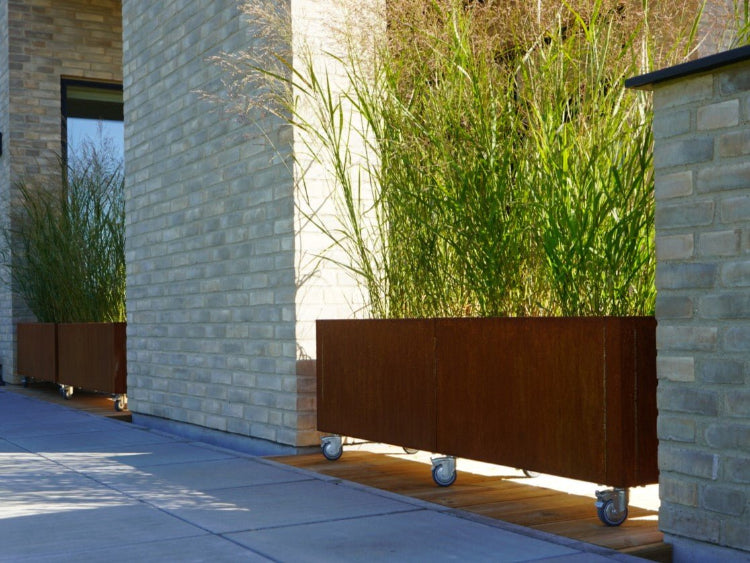
Select materials wisely
The type of surface material plays a key role in how resistant it is to rust runoff:
- Wood types like cumaru, ipé, and larch are dense and naturally oily, making them more resistant than, for example, pressure-treated pine.
- Tiles made of ceramic, granite, or high-fired clinker have smoother, denser surfaces than concrete tiles or natural stone – and are therefore less prone to discoloration.
The denser and more treated the surface is, the easier it is to keep it free from rust stains.
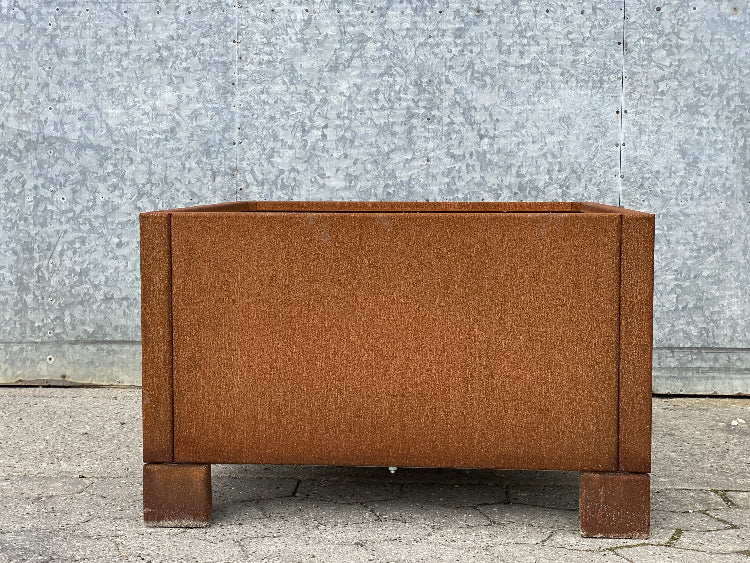
Alternatives and solutions
At byJEMA, we design solutions that combine both aesthetics and functionality:
- Choose planters in corten steel with adjustable feet, legs, or wheels – minimizing direct contact with the surface.
- Consider our galvanized or black powder-coated variants if you want the same form and function – but without the risk of rust stains.
This gives you the freedom to use steel products on both wood and tile surfaces – completely worry-free.
Do you have any questions?
Frequently Asked Questions
Rust stains on tiles or wood?
Start with water and a stiff brush. If that’s not enough, you can try:
- Oxalic acid crystals mixed with water
- Rust remover with citric acid (suitable for tiles)
Always test on a small, inconspicuous area first – and avoid harsh chemicals on soft tiles or oil-treated wood.
Tip: Porous tiles can be difficult to fully restore. That’s why prevention is still the best protection.
A great question we often get!
Corten steel is ready to be placed on decking or tiles when it is:
- dry and even
- evenly rusted – without dark, wet patches
- almost fully patinated or only lightly discoloured
This typically takes 1–3 months, depending on the weather.
In the meantime, place it on grass, gravel, or a similar surface.
Yes – corten steel is designed to withstand frost, snow, and rain.
But to protect decking and tiles during winter, we recommend:
- Check that water can drain away freely from the bottom
- Remove leaves and debris to avoid blocked drainage
- Consider placing the product on small feet or spacers during the winter
Bonus: The rust layer will only become more beautiful through changing winter weather!
Do you prefer a modern or a natural look?
Here are three style ideas:
🖤 Modern: Corten steel + black ceramic tiles + LED lighting
🌿 Nordic: Corten steel + larch wood + simple grasses and lavender
🔥 Raw & Rustic: Corten steel + concrete tiles + fire pit and lounge furniture
Remember: Corten steel adds warmth and texture – and fits beautifully into both minimalist and more classic garden designs.
- Should the product stay in place, or do I want to be able to move it?
- Is the surface absorbent (concrete/wood) or dense (ceramic/granite)?
- Do I want a fully patinated look, or do I have time to let it develop naturally?
- Do I want to fully protect the surface – or am I okay with a bit of natural patina?
👉 A few honest answers make it easier to choose the right solution from the start.

